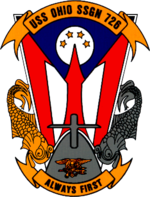Wednesday 12 February 2014
Thursday 9 January 2014
My expectation about my Programme
This diploma will provide you with sufficient knowledge and skills to
allow you to operate as a competent practitioner within the field of
mechanical engineering. You will develop not only technical know-how but
also a practical and analytical approach to problem-solving that will
allow you to address a range of mechanical engineering challenges.
Within this context, the main aims of this diploma are:
When you graduate you will be able to:

Within this context, the main aims of this diploma are:
- to provide the opportunity for students to progressively acquire a thorough grounding in the concepts and skills of the central topics in mechanical engineering;
- to give you the skills and knowledge to deliver solutions to real engineering problems;
- to show you how engineering works in a business context, enabling you to achieve results within economic constraints;
- to become effective engineers and undertake lifelong learning particularly for continuing professional development.
When you graduate you will be able to:
- apply general engineering theory and scientific principles to find solutions to a wide range of practical problems;
- understand the management and business practices and apply professional and ethical responsibilities including global and social context of engineering;
- understand the use of relevant test and measurement equipment;
- teamwork, management and leadership for effective practice;
- demonstrate your ability to apply mathematical methods to model and analyse mechanical engineering problems;
- display your competence with a range of test and measurement equipment;
- apply creativity and appropriate computer based methods for solving mechanical engineering problems.
Sunday 5 January 2014
USS OHIO (SSGN-726)
 USS Ohio SSGN conversion | |
| Career (US) | |
|---|---|
| Namesake: | U.S. state of Ohio |
| Ordered: | 1 July 1974 |
| Builder: | General Dynamics Electric Boat |
| Laid down: | 10 April 1976 |
| Launched: | 7 April 1979 |
| Commissioned: | 11 November 1981 |
| Homeport: | Bangor, Washington |
| Motto: | Always first |
| Nickname: | First and Finest! |
| Status: | in active service, as of 2014[update] |
| Badge: |  |
| General characteristics | |
| Class & type: | Ohio class SSGN |
| Displacement: | 16,764 metric tons (16,499 long tons) surfaced[1][2] 18,750 metric tons (18,450 long tons) submerged[1] |
| Length: | 560 ft (170 m)[1] |
| Beam: | 42 ft (13 m)[1] |
| Propulsion: | 1x S8G PWR nuclear reactor[1] 2x geared turbines[1] 1x 325 hp (242 kW) auxiliary motor 1 shaft @ 60,000 shp (45 MW)[1] |
| Speed: | 12 knots (14 mph; 22 km/h) surfaced[1] +20 knots (23 mph; 37 km/h) submerged (official)[1] 25 knots (29 mph; 46 km/h) submerged (reported)[1] |
| Range: | unlimited |
| Endurance: | approximately 60 days with food supplies |
| Test depth: | +800 ft (240 m) |
| Crew: | 15 officers[1][2] 140 enlisted[1][2] |
| Sensors and processing systems: | BQQ-6 Bow mounted sonar[1] BQR-19 Navigation[1] BQS-13 Active sonar[1] TB-16 towed array[1] |
| Armament: | 4 × 21 inches (530 mm) bow torpedo tubes. SSGN conversion 22 tubes, each with 7 Tomahawk cruise missiles. |
CVN 68
Jump to: navigation, search
| ||||||||||||||||||||||||||||||||||||||||||||||||||||||||||||
The ship was named for World War II Pacific fleet commander Chester W. Nimitz, who was the navy’s third fleet admiral. Unlike all of the subsequent Nimitz class aircraft carriers, Nimitz only uses her namesake's surname as is common for naval officers. She is also the first carrier of her class and the most recent supercarrier in service not to be named for someone who held elected office in the United States.
Nimitz had her homeport at Naval Station Norfolk until 1987, when she was relocated to Puget Sound Naval Shipyard in Bremerton, Washington. Following her Refueling and Complex Overhaul in 2001, her homeport was changed to NAS North Island in San Diego, California. The home port of Nimitz was again moved to Everett, Washington, in 2012. This move is expected to save the Navy $100 million.
USS Nimitz first deployed to the Mediterranean on 7 July 1976 with Carrier Air Wing 8 embarked in company with the nuclear-powered cruisers USS South Carolina and USS California. In November 1976, Nimitz was awarded the Battle "E" from Commander, Naval Air Force U.S. Atlantic Fleet, for being the most efficient and foremost aircraft carrier in the Atlantic Fleet. The cruise was uneventful, and the carrier returned to Norfolk, Virginia on 7 February 1977.
A second uneventful Mediterranean cruise was conducted from 1 December 1977 to 20 July 1978. The third deployment began on 10 September 1979 to the Mediterranean. The ship moved to the Indian Ocean in response to the Iran hostage crisis in which the U.S. Embassy in Tehran, Iran, was overtaken and 52 hostages were held. (Prior to this trip, the ship took part in the shooting of the movie The Final Countdown and played a central role in the film.) After four months on station, Operation Evening Light was launched from Nimitz's decks in an attempt to rescue the U.S. Embassy staff. The mission was aborted after a helicopter crashed at a refueling point in the Iranian desert. The ship returned home 26 May 1980, having spent 144 days at sea.
1980s[edit]
On 26 May 1981, an EA-6B Prowler crashed on the flight deck, killing 14 crewmen and injuring 45 others.[6] The Prowler was fuel-critical after a "bolter" (missed approach), and its crash and the subsequent fire and explosions destroyed or damaged eleven other aircraft.[7] Despite being uninvolved with the operation of the aircraft or cause of the accident, the focus turned to testing conducted during autopsies which found that several members of the flight deck crew tested positive for marijuana. Although unclear how it would have affected this incident, President Ronald Reagan instituted a "Zero Tolerance" drug policy across all of the armed services, which started the mandatory drug testing of all U.S. service personnel.[8]Nimitz deployed again to the Mediterranean on 3 August 1981. The ship, in company with USS Forrestal, conducted a Freedom of Navigation exercise in international waters in the Gulf of Sidra near Libya on 18 and 19 August 1981. On the morning of 19 August 1981, two F-14As of VF-41 were engaged by two Libyan Su-22s, resulting in the two Libyan aircraft being shot down in what became known as the Gulf of Sidra incident.
Nimitz's fourth deployment, from 10 November 1982 to 20 May 1983, was to the Caribbean Sea and the Mediterranean Sea. Nimitz deployed for a fifth time on 8 March 1985. On 14 June 1985, two Lebanese gunmen hijacked TWA Flight 847, which carried 153 passengers and crew and included Americans. In response, Nimitz was deployed to the coast of Lebanon, where she remained until August 1985. The embarked Airwing 8 flew continuous sorties for 67 days, bombing several sites in Beirut including the runways of Beirut Rafic Hariri International Airport. The ship returned to Norfolk on 4 October 1985.
Nimitz, again with CVW-8 embarked, departed Norfolk for her sixth and final Mediterranean deployment on 30 December 1986. After four months and numerous Mediterranean port visits, the carrier crossed the equator en route to Rio de Janeiro. From Rio, she proceeded south around Cape Horn and into the Pacific Ocean. After a brief stop in San Diego, to offload her East Coast air wing, she arrived at her new home port of Bremerton, Washington, on 2 July 1987.
Nimitz deployed to the Western Pacific with Carrier Air Wing 9 embarked on 2 September 1988. During the 1988 Olympic Games in Seoul, Nimitz provided security off the coast of South Korea. In October it operated in the North Arabian Sea participating in Operation Earnest Will, the protection of reflagged Kuwaiti tankers. On 30 November 1988, while in the Arabian Sea, a 20 mm cannon accidentally fired during maintenance, striking an KA-6 Intruder. The ensuing fire spread to six other aircraft, and two sailors were killed. Nimitz returned to Bremerton on 2 March 1989.
1990s[edit]
On 25 February 1991, Nimitz departed Bremerton for the Persian Gulf in relief of the USS Ranger in the aftermath of Operation Desert Storm, returning to Bremerton on 24 August 1991. Nimitz again deployed to the Persian Gulf on 1 February 1993, in support of Operation Southern Watch, returning on 19 August 1993.On 27 November 1995, Nimitz deployed to the Western Pacific, Indian Ocean and Persian Gulf with Carrier Air Wing Nine (CVW-9). In March 1996, it patrolled the waters off Taiwan amid missile tests conducted by the Chinese in the area, becoming the first American warship to pass through the Taiwan Strait since 1976. It also cruised the Persian Gulf in support of Southern Watch prior to returning from deployment on 20 May 1996.
Between 14–24 July 1997, Nimitz participated in Joint Task Force Exercise 97-2 (JTFEX 97-2) off the coast of southern California, which also served as a "Revolution in Strike Warfare" demonstration. The latter event was designed to demonstrate the capability of an aircraft carrier and her embarked air wing to project carrier-based airpower into littoral warfare.[9] On 20 July 1997, Nimitz and Carrier Air Wing Nine began a high-intensity strike campaign. When flight operations were completed four days later, Nimitz and Carrier Air Wing Nine had carried out 771 strike sorties while dropping 1,336 bombs on target. Carrier Air Wing Nine flew 975 fixed-wing sorties during this four-day surge operation. Almost 80 percent of the sorties flown were strike sorties, with strike support accounting for another 10 percent. F/A-18 Hornet strike fighters flew nearly 80 percent of the strike sorties. Of the 771 strike sorties, 727 were loaded with ordnance, while 44 were electronic support sorties by EA-6B Prowlers. During this four-day period, only a portion of the medium-range interdiction strikes required tanking support. KC-135 and KC-130 tanker aircraft provided most of this support. S-3 Vikings conducted recovery tanking and supplied more than one-third of the fuel passed to Carrier Air Wing Nine aircraft during this surge operation.[10][11] This surge had been preceded by a 16-hour preparation after undergoing four days that had generated about 700 fixed-winged sorties.[11][12] A following study by the Center for Naval Analyses determined that Nimitz and Carrier Air Wing Nine could have maintained this high-sortie operational tempo for another twelve to twenty-four hours before requiring her ordnance and aviation fuel stocks to be replenished as well as equipment maintenance and rest for her crews.[13]
On 1 September 1997, Nimitz began an around the world cruise, again supporting Southern Watch, which ended in Newport News, Virginia on 2 March 1998. She next spent the next three years undergoing a nuclear Refueling and Complex Overhaul that ended on 25 June 2001.
2000s[edit]

Lt. Cmdr. David Bynum, a Navy chaplain aboard USS Nimitz (CVN 68), passes out happy face sponge balls to the students of CSI High School for the Deaf in Chennai India during a community relations visit in July 2007
Nimitz's eleventh operational deployment began on 3 March 2003.[14] It relieved USS Abraham Lincoln (CVN-72) in the Persian Gulf in mid-April 2003, launching Carrier Air Wing 11 aircraft sorties over Iraq in support of Operation Iraqi Freedom (OIF) and Afghanistan in support of Operation Enduring Freedom (OEF). It returned to San Diego on 5 November 2003. Nimitz and CVW-11 were awarded the 2003 Battle "E"[15] and Flatley Award[16] in early 2004.
Nimitz, again with CVW-11 embarked, deployed to the Persian Gulf on 7 May 2005, returning on 8 November 2005.[17] This deployment marked three decades of service, and was depicted in the Emmy award winning 2008 PBS documentary series Carrier.[18] In June 2006, Nimitz was awarded the 2005 Battle "E".[19]
The carrier departed North Island for her thirteenth deployment on 2 April 2007 to the Arabian Sea, relieving the USS Dwight D. Eisenhower (CVN-69) in support of OIF.[20] It anchored off Chennai, India on 2 July 2007 as part of efforts to expand bilateral defense cooperation between India and the United States.[21] Sailors participated in community work in Chennai prior to departing, on 5 July 2007, along with the destroyer USS Pinckney (DDG-91) towards the Persian Gulf. It returned to North Island on 30 September 2007.[22]
On 24 January 2008, Nimitz deployed to the Pacific for a "surge"-deployment.[23] On 9 February 2008, two Russian Tu-95 'Bear' bombers overflew the carrier in the Western Pacific.[24] Four F/A-18C Hornets were launched when the bombers were 500 miles (800 km) away from the US ships, and intercepted the bombers 50 miles (80 km) south of Nimitz. Two F/A-18s trailed one of the bombers, which buzzed the deck of the carrier twice, while the other two F/A-18s trailed another Tu-95 circling about 50 miles (80 km) away from the carrier. Reportedly, there was no radio communication between the American and Russian aircraft. According to the Department of Defense, one of the two aircraft was said to have flown above Nimitz at an altitude of 2,000 feet (610 m). On the same day, Russian aircraft entered Japanese airspace, which caused the Japanese to raise protest to the Russian ambassador in Tokyo.[25]
Again, on 5 March 2008, a Russian bomber came within 3 to 5 nautical miles (6 to 9 km) and flew 2,000 feet (610 m) above Nimitz and her battle group. Two F/A-18 fighters intercepted the Russian aircraft and escorted it out of the area.[24]
Nimitz was awarded the Navy Battle "E" for battle efficiency for 2007 along with the Ney award for food service excellence. It returned to her home port of San Diego on 3 June 2008.
The Nimitz Strike Group, including CVW-11, departed the States for a scheduled Western Pacific deployment on 31 July 2009,[26] and began to fly combat missions in support of Operation Enduring Freedom 21 September.[27]
2010s[edit]
In January 2010, while in the Persian Gulf, the ship was awarded the Meritorious Unit Commendation for her back-to-back deployments in support of the wars in Iraq and Afghanistan in 2007 and 2008. The award was presented by Admiral Gary Roughead in a ceremony on the ship 6 January 2010.[28]Nimitz visited Hong Kong for five days in February 2010 to allow her crew to rest and visit the city. The visit occurred despite China previously preventing a visit by the carrier USS Kitty Hawk (CV-63).[29][30]
On 9 December 2010, the Navy formally announced that Everett was to be the new home port for Nimitz.[31] On 9 March 2012, Nimitz arrived at her new homeport of Naval Station Everett after spending nearly a week at sea conducting post overhaul sea trials.[32]
In March 2012, Nimitz arrived at her new home port of Naval Station Everett in Washington State after more than a year of maintenance work in Bremerton, WA. She replaced the Nimitz-class carrier, Abraham Lincoln.[33] On 3 August 2012, Nimitz departed from Pearl Harbor after a two-day port call, arriving at NAS North Island on 9 August 2012 to begin Fleet Replacement Squadron Carrier qualifications.[34] On 6 October 2012, a MV-22 Osprey tilt-rotor aircraft from squadron VMM-165 landed and refuelled on board Nimitz. This operation was part of an evaluation of the feasibility of the MV-22 as a potential replacement for the C-2 Greyhound carrier onboard delivery (COD) cargo transport aircraft.[35]
After the 1 December 2012 inactivation of USS Enterprise (CVN-65), Nimitz became the oldest U.S. carrier in active service (although Enterprise retains the record for longest-serving) and the oldest active combat ship of the United States Navy.
According to the BBC[36] on August 30, 2013, USS Nimitz was located in the Persian Gulf, ready to contribute to an operation against Syria when President Obama ordered a military strike. A Reuters report two days later said that the carrier and its task group had been re-routed westwards across the Arabian Sea.[37]
Stars and Stripes [38] Reported that the ship — in its eighth month out to sea — transited the Suez Canal on Oct. 20 into the U.S. 6th Fleet [39] area of responsibility, where the Navy intends to keep it for a few weeks conducting joint training with allied nations before returning it home.
Subscribe to:
Posts (Atom)















































